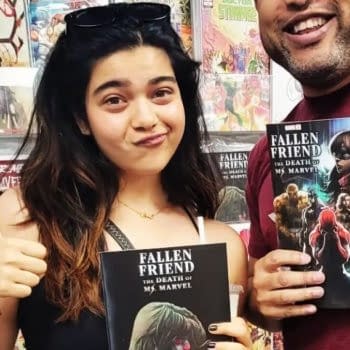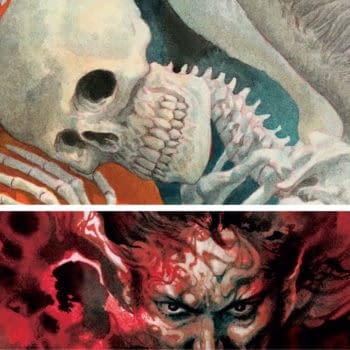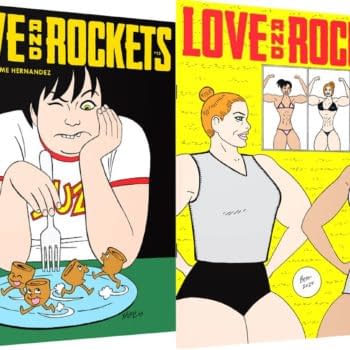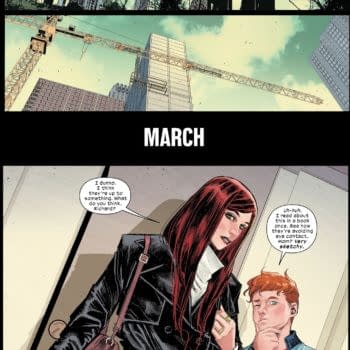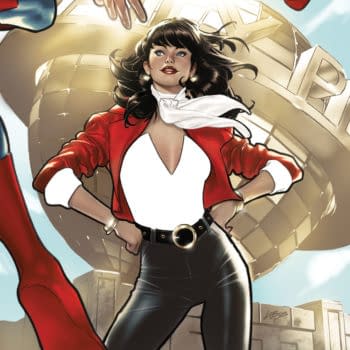Posted in: Recent Updates | Tagged: dennis o'neil, denny o'neil, denny o'neill, how to write comics and graphic novels, How to write comics and graphic novels by Dennis O'Neil
How To Write Comics And Graphic Novels by Dennis O'Neil #2 – Recommended Reading

Dennis O'Neil has a long history in the comics industry as both a writer and editor. He's best known for writing Green Lantern/Green Arrow and Batman, through the seventies, Spider-Man in the eighties and for editing Batman-related titles in the nineties. A widely published novelist and screenwriter, he is currently lecturing at the NYU on Writing Comics And Graphic Novels, starting today. Bleeding Cool is grateful to receive a taster of the course every week.
Let's begin with a reading list. (I mean, all the other professors here in the schoolyard have reading lists, don't they? Well, I want one too! Or I'll hold my breath!)
Here goes:
1. Screenplay – Syd Field.
2. Adventures in the Screen Trade – William Goldman.
3. Hitchcock– Truffaut
5. Comics and Sequential Art – Will Eisner
6 – Graphic Storytelling – Eisner
7 –Understanding Comics – Scott McCloud
8 – Writing for Comics with Peter David – Peter David (Surprised?)
9 – The Writer's Journey – Christopher Vogler
10 – Save the Cat – Blake Snyder
(I could add another title to the list, something called DC Comics Guide to Writing Comics, but it was written by some fossilized old check chasing hack, and would you want to waste your time on such drivel?)
The list is not definitive–far from it. But the works cited above might be useful for someone trying to grasp what writing for visual media is all about.
Last week, at the first session of my New York University class, we had a pleasant surprise, a visit from Larry Tye, who's writing a book about Superman book for Random House. He asked me questions, the students joined in, and the semester was off to a serendipitous start. But, alas, this week we're back to business-as-usual, which means the innocents who show up Wednesday night will have to listen to my blather for an excruciating two hours-plus. Let us remember the Buddha's first noble truth: Life sucks! (The translation is mine, and I admit it is, er… loose.)
Those of you who were with us last week, both at NYU and here at our cozy website, will recall that we offered a definition of the word "story." At the risk of boring you with repetition…
A story is a structured narrative designed to achieve an emotional effect, demonstrate a proposition or reveal character.
Now add:
It must have conflict and there must be something at stake.
Action should rise and culminate in most powerful moment.
Everything should be presented with maximum clarity.
Every element of the strip–writing, art, coloring, lettering–should be aimed at achieving all of the above.
Now, to push the definition thing a bit further, let's define comics: Comics are a language in which image and word cooperate to convey information and story.
Let's look a bit harder at the comics-as-language trope.
This particular and peculiar language, like conventional languages, has different parts–radically different kinds of parts that are processed in different areas of the brain. Those parts are–ready for a flabbergasting surprise?–words and images, and they have to work together as, for example, nouns and verbs cooperate to convey meaning in a normal English sentence. So writing comics is similar to writing television and movie scripts, which are also about words and images melding to convey narrative–similar but a long way from identical. Most of the people who have worked in these diverse media would, I think, agree that writing comics might be a tad more demanding. (Writing comics scripts doesn't pay as well as doing the equivalent work for TV, but did I say life was fair?)
Some particulars:
Comics images must be static–a comic book world is a world lit by a strobe light. (And one of the most common beginner's mistakes is the asking for movement within a panel.)
There is an image-to-copy ratio. Stripped of poetry, this means that too many words will obscure the picture and the information it contains.
There is a limited amount of visual information that will fit on a page, and therefore a limited number of visual information any single page will accommodate.
There is a limited amount of pictorial information that will fit into any single picture–no artist is going to cram the Macy's Thanksgiving Parade into, say, a seventh of a page.
So, your task is simple: just become as fluent in comicese as you are in whatever language your parents spoke while you were growing up and you are a master comics writer. (Well, okay, half a master comics writer. A third of a master comics writer? There are other elements, such as structure and plot that you should be conversant with, too.)
Next week, we'll have a look at O'Neil's Industrial Strength Can't Fail Super Homogenized structure for a single-issue superhero story and from there, we'll proceed on to other kinds of structures.
Dennis O'Neil teaches a ten week course on Writing Comics And Graphic Novels at the New York University. Classes are every Wednesday evening from 6.45pm to 9pm, starting tonight. For further information, please call NYU's School of Professional and Continuing Studies at 212 998 7200.







